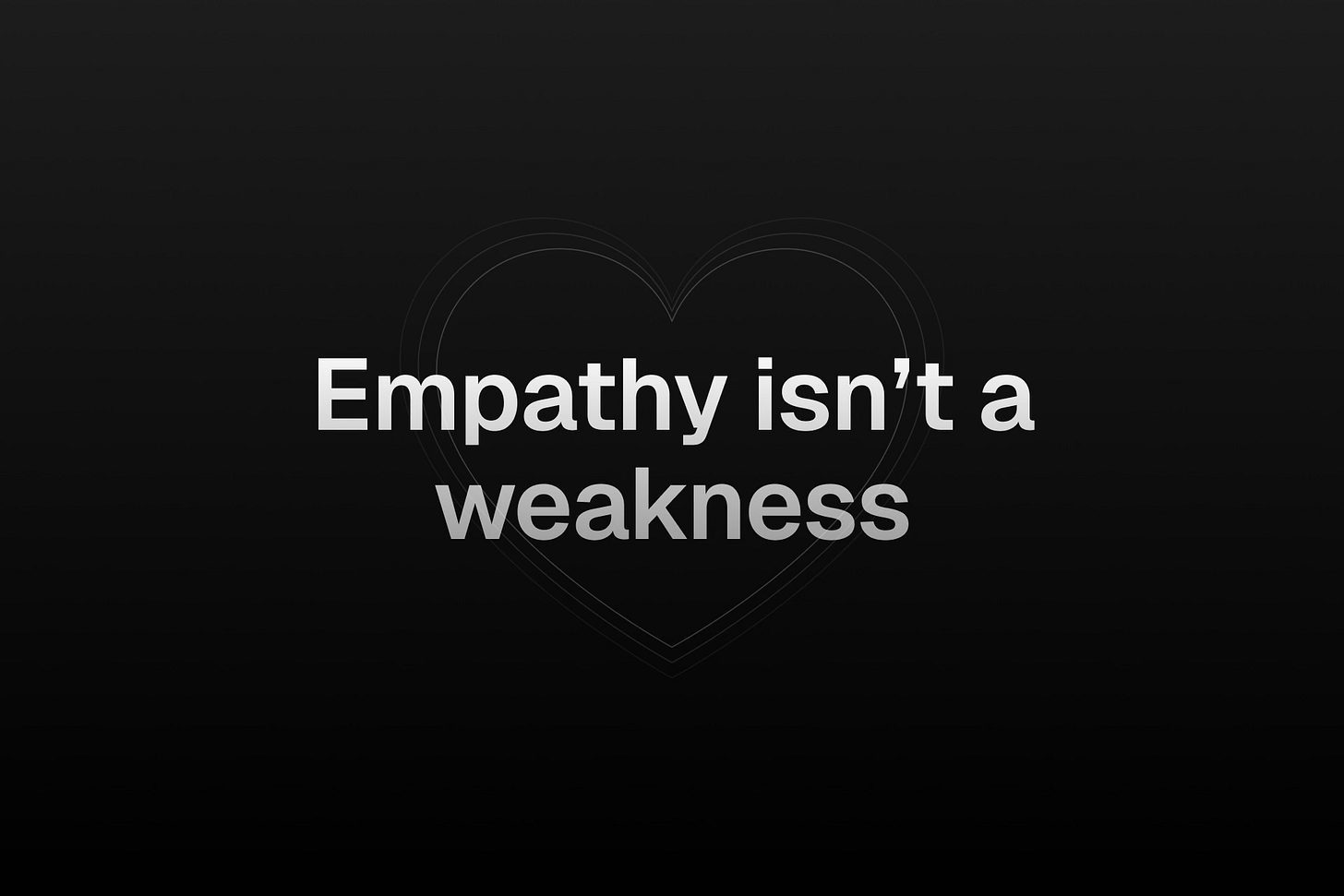If you’re someone who’s always been told you’re “too sensitive,” you might not realize what an asset that actually is—until you work in product. I was raised to tune in—to notice the shift in someone’s tone, the subtext in their silence, the discomfort behind their smile. As I grew up hyper-attuned, it became second nature. Somewhere along the way, empathy became my “default operating system”. I could walk into a room and feel everything.
At first, it felt like a personal strength. But in high-pressure environments, that same sensitivity started to feel like a liability.
Until I realized: it wasn’t.
Empathy Isn’t Soft — It’s Strategic
When I started working closely with founders, I didn’t have the language for what I was doing. I just knew how to listen. I noticed when teams were misaligned before it showed up in deadlines. I could sense when feedback landed poorly, even if no one said a word. I thought I was just being helpful. But what I was actually doing was pattern recognition.
It was systems thinking. It was product intuition. It was strategy.
Long before I became a PM, I was already operating like one.
An Unofficial MBA in Early-Stage Chaos
Startups are messy. There’s no playbook for founder fears, pivots, or the 2 AM “should we ship this?” moments.
That early exposure— to vision swings, hiring debates, messy launches, and everything in between —taught me not just how things work, but how they break. More importantly, I saw how often empathy was the difference between a team that bent and one that broke.
I didn’t get a traditional MBA. But what I did get was an unfiltered, real-time education in building under pressure.
The Double-Edged Sword of Empathy
Now that I’m building my own product, I’m more aware of how empathy shows up in leadership—and where it can go sideways.
When you’re naturally empathetic, it’s easy to overextend. You try to absorb tension so your team doesn’t have to. You become the emotional buffer. You say yes too often. You feel responsible for how everyone else feels.
And that’s how burnout creeps in—quietly.
What I’m Relearning
I’m learning that being empathetic doesn’t mean carrying everything.
It means listening deeply and setting boundaries.
It means designing products and cultures that don’t depend on over-functioning.
It means building systems that don’t rely on one person doing emotional triage 24/7.
I’m trying to unlearn the belief that “good leadership” means absorbing all the discomfort. It doesn’t. That kind of leadership isn’t sustainable—for you or for the people you work with.
Final Thoughts
So, how do you build with Empathy—without burning out? How do you help others— customers, teammates, early-stage builders — while not abandoning yourself? How do you unlearn the people-pleaser patterns while keeping the magic?
Here’s where I’m starting:
Rituals rooted in honesty, not performance.
Clarity in product decisions, not cleverness.
Feedback loops that don’t rely on guesswork.
This isn’t a finished framework. It’s a checkpoint.
If you’re a founder, designer, or PM who leads with empathy and sometimes feels like it’s “too much” — I get it. And your empathy?
It isn’t a weakness. It’s your edge.
Just make sure you use it on yourself too.
💭 How have you seen empathy help or hurt your work? What boundaries have made the biggest difference for you as a leader?


